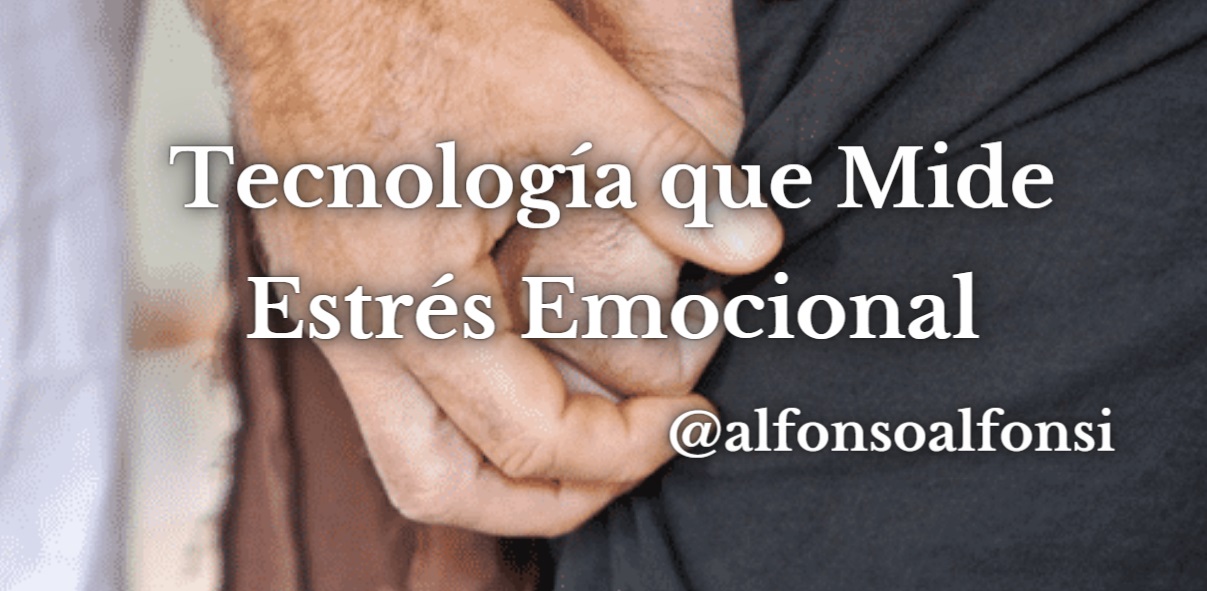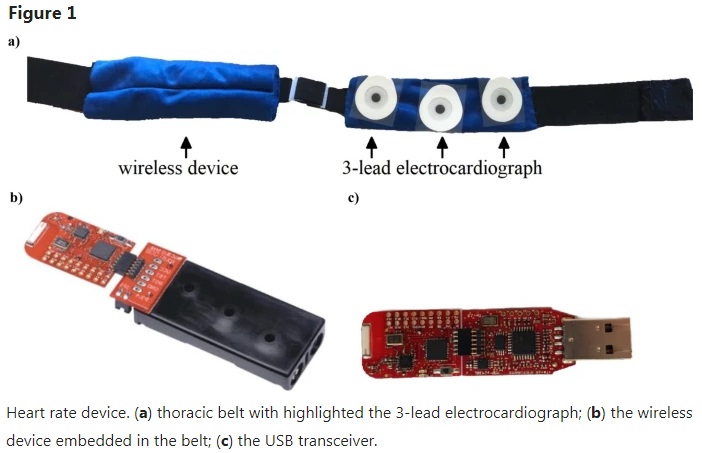Technology that Measures Emotional Stress

The Title was made by @alfonsoalfonsi using CANVAS and the image by PxHere
El Título fue realizada por @alfonsoalfonsi usando CANVAS e imagen de PxHere

Hello, Friends of Hive, it's a pleasure to be with you again as we dedicate this post to technology that uses non-invasive sensors to measure signals of an individual's health status.
Hola Amigos de Hive un gusto estar nuevamente con ustedes dedicando este post a la tecnología que usa sensores no invasivos para medir señales del estado de salud de un individuo.

The focus is on compact, wearable smart devices capable of measuring emotional stress, which has been on the rise in recent years. According to experts, these technologies are user-tolerable and can detect stress, anxiety, and depression.
La atención se enfoca en los dispositivos inteligentes compactos y portátiles capaces de medir el estrés emocional, la cual ha estado en ascenso en los últimos años. Según los entendidos estas tecnologías son tolerables para el usuario y permiten detectar el estrés, la ansiedad y la depresión.
There is the feasibility of creating technology capable of detecting mental states, so that patients can respond promptly, identifying the symptoms or triggers they usually face. In addition, the valuable information that emerges from them for the clinical and personal environment, with its respective validation.
Existe la viabilidad de crear tecnología capaz de detectar estados mentales, con la finalidad de que los pacientes puedan responder con prontitud, identificando los síntomas o desencadenantes a los que suelen enfrentarse. Además, la valiosa información que de ellos se desprende para el entorno clínico y personal, con su respectiva validación.
Hickey et al. (2021) (citing the work of Vogel et al.; Elgendi and Menon & Li et al.) note that stress may increase the risk of cardiovascular disease; anxiety disorders are associated with the leading mental illness with 264 million sufferers, and depression could be the second leading cause of disability in the next decade.
Hickey et al. (2021) (citando los trabajos de Vogel et al.; Elgendi y Menon y Li et al.) señalan que el estrés puede aumentar el riesgo a las enfermedades cardiovasculares; los trastornos de ansiedad se le asocian a la principal enfermedad mental con 264 millones de afectados y, que la depresión podría ser la segunda causa de discapacidad en la próxima década.
Not surprisingly, the growth of non-invasive smart devices related to these aspects of health has increased in recent years, especially now in times of pandemics. We have everything from smartphones with applications aimed at measuring health-related factors, smartwatches with photoplethysmography, electroencephalogram (EEG) systems, and sensors that measure stress levels from physiological signals.
No es de extrañarnos, que el crecimiento de los dispositivos inteligentes no invasivos relacionados a esos aspecto de la salud haya incrementado en los últimos años, más ahora en tiempos de pandemia. Tenemos desde los teléfonos inteligentes con aplicaciones dirigidas a medir factores relacionados con la salud, relojes inteligentes con fotopletismografía, sistemas electroencefalograma (EEG) y sensores que miden los niveles de estrés a partir de señales fisiológicas.
Gedam & Paul (2021) indicate that stress is a feeling of being under abnormal pressure coming from different aspects of our daily life, its management should be kept at a low level that helps to reduce health risks.
Gedam y Paul (2021) indican que el estrés es una sensación de estar bajo una presión anormal que proviene de diferentes aspectos de nuestra vida cotidiana, su gestión debe mantenerse a un nivel bajo que ayuda a reducir los riesgos para la salud.
The American Psychological Association (APA) classifies stress into three types: acute, acute episodic, and chronic. Acute is the least harmful and helps to cope with situations. When acute stress is experienced regularly, one moves on to episodic acute stress. Chronic stress is the most dangerous, if left unchecked for a prolonged period of time, it will affect the physical and mental health of the person.
La Asociación Americana de Psicología (APA: American Psychological Association) clasifica el estrés en tres tipos: agudo, agudo episódico y crónico. El agudo es el menos dañino y ayuda enfrentar a situaciones. Cuando se experimenta regularmente estrés agudo se pasa al agudo episódico. El estrés crónico es el más peligroso, si no se controla durante un periodo de tiempo prolongado, afectará la salud física y mental de la persona.
Stress screening approaches have been reported in different scientific writings. Recently, Ramani et al. (2021) highlight the methods, which in turn differ in the types of stress-related factors and the procedures they use. Among the methods are physical measurements, physiological signals, response to queries, mathematical tests, videos, blogs and other techniques, etc.
Los enfoques de detección del estrés se han reportado en diferentes escritos científicos. Recientemente, Ramani et al. (2021) destacan los métodos, que a su vez difieren en los tipos de factores relacionados con el estrés y los procedimientos que utilizan. Entre los métodos se encuentran las medidas físicas, señales fisiológicas, respuesta a consultas, test matemáticos, vídeos, blogs y otras técnicas, etc.


Source/Fuente: Fioriello et al. (2020). Creative Commons
Attribution 4.0 International License.

The researchers took physiological data signals to quantify stress using wearable devices, from which features were extracted using different base algorithms before employing machine learning algorithms to build their classification models. The physiological signals can then be used to detect a person's stress with wearable sensors and machine learning algorithms that are accurate.
Los investigadores tomaron señales de datos fisiológicos para cuantificar la tensión mediante dispositivos portátiles, de los cuales se extrajeron características utilizando diferentes algoritmos bases antes de emplear algoritmos de aprendizaje automático para construir sus modelos de clasificación. Entonces, las señales fisiológicas pueden utilizarse para detectar el estrés de una persona con sensores portátiles y algoritmos de aprendizaje automático que son precisos.
Several stress detection approaches use low-cost wearable sensors for data acquisition, and many rely on machine learning algorithms, which predict an individual's stress level. Researchers have found that stress levels can be detected through some physiological measures such as heart rate, heart rate variability, and skin conductance.
Existen varios enfoques de detección del estrés que utilizan sensores portátiles de bajo costo para la adquisición de datos y muchos se basan en algoritmos de aprendizaje automático, que predicen el nivel de estrés de un individuo. Los investigadores han descubierto que el nivel de estrés puede detectarse a través de algunas medidas fisiológicas como la frecuencia cardíaca, la variabilidad de la frecuencia cardíaca y la conductancia de la piel.
Due to today's demanding and aggressive lifestyle, early identification of depression can be very helpful in taking further action before it can harm people's emotional and physical health.
Debido al exigente y agresivo estilo de vida actual, la identificación temprana de la depresión puede ser muy útil para tomar más medidas antes que pueda perjudicar la salud emocional y física de las personas.

See you, I hope you liked this post.
Nos vemos, espero que les haya gustado este post.
Thank you for your time and comments.
Gracias por su tiempo y comentarios.

References / Referencias
American Psychological Association. (2021). Stress relief is within reach. https://www.apa.org/topics/stress
Fioriello, F., Maugeri, A., D’Alvia, L., Pittella, E., Piuzzi, E., Rizzuto, E., Del Prete, Z., Manti, F. & Sogos, C. (2020). A Wearable Heart Rate Measurement Device for Children with Autism Spectrum Disorder. Scientifc Reports. 10, 18659. https://doi.org/10.1038/s41598-020-75768-1
Gedam, S. & Paul, S. (2021). A Review on Mental Stress Detection Using Wearable Sensors and Machine Learning Techniques. IEEE Access, 9, 84045-84066. https://doi.org/10.1109/ACCESS.2021.3085502
Hickey, B. A., Chalmers, T., Newton, P., Lin, C-T., Sibbritt, D., McLachlan, C., Clifton-Bligh, R., Morley, J., &
Lal, S. (2021). Smart Devices andWearable Technologies to Detect and Monitor Mental Health Conditions and Stress: A Systematic Review. Sensors, 21, 3461. https://doi.org/10.3390/s21103461
Ramani, B., Patel, W., Solanki, K. & Patel, M. (2021). An Energy-Efficient Stress Monitoring System Using Physiological Data. International Journal of Engineering Research & Technology (IJERT),9(8), 132-137. https://www.ijert.org/an-energy-efficient-stress-monitoring-system-using-physiological-data


The banner and the photographs on it are my property. Made with Power Point, Paint and the Linerock Investment LTD ToonMe App.
El banner y las fotografías son de mi propiedad. Realizado con Power Point, Paint y Linerock Investment LTD Aplicación ToonMe.
Thanks for your contribution to the STEMsocial community. Feel free to join us on discord to get to know the rest of us!
Please consider supporting our funding proposal, approving our witness (@stem.witness) or delegating to the @stemsocial account (for some ROI).
Please consider using the STEMsocial app app and including @stemsocial as a beneficiary to get a stronger support.
Thank you for supporting this post.
Congratulations @alfonsoalfonsi! You have completed the following achievement on the Hive blockchain and have been rewarded with new badge(s) :
Your next target is to reach 5000 upvotes.
You can view your badges on your board and compare yourself to others in the Ranking
If you no longer want to receive notifications, reply to this comment with the word
STOPhttps://twitter.com/lfonsi3/status/1418360114982146051?s=20
We must agree that technology does a lot for us and good to know that it's here to help us on emotional side as well.
True that we live a stressful life and early detection of depression helps.
Thank you @alokkumar121 for your accurate comment. As long as there are more of us who promote technology in favour of living beings, this planet will continue to have life. Thank you.